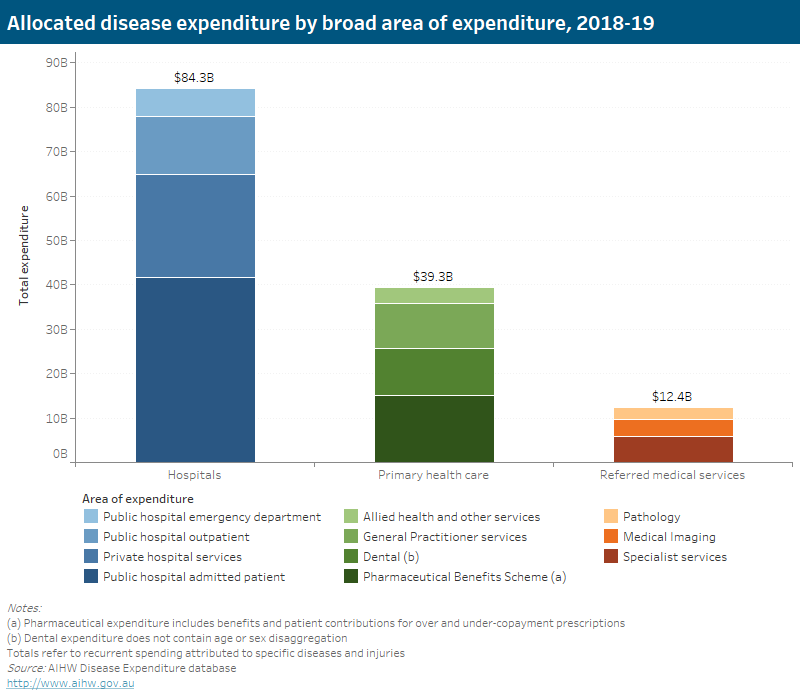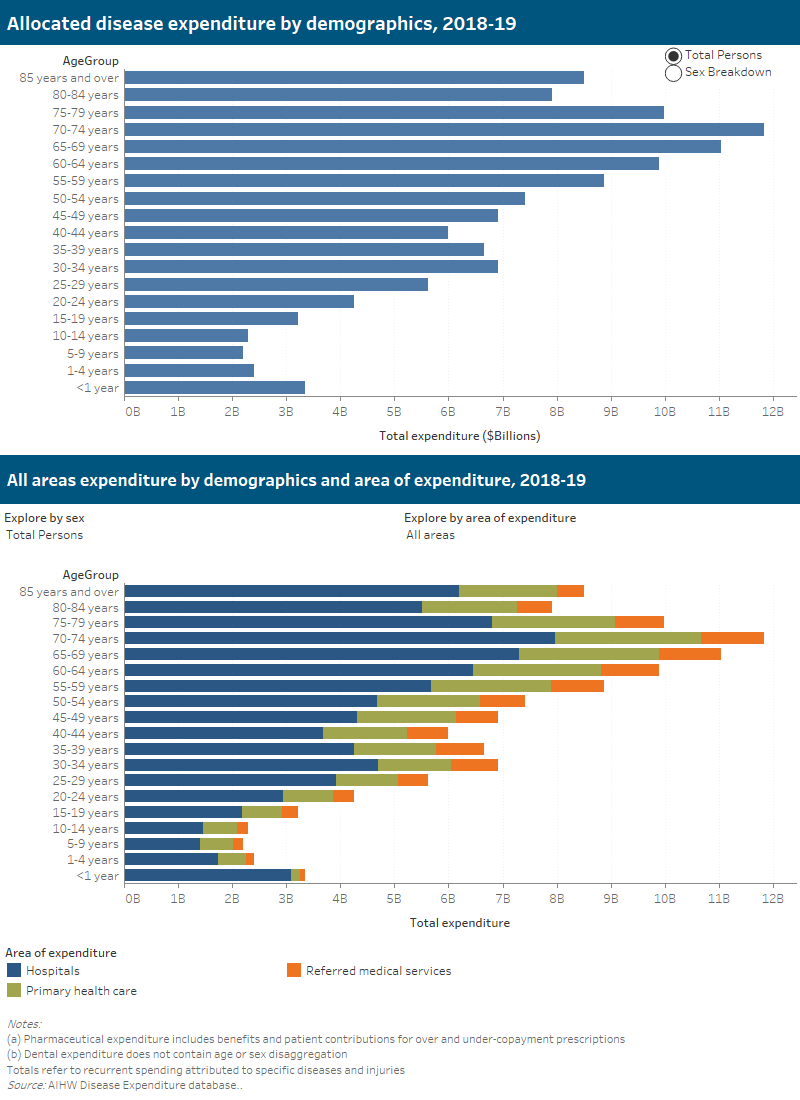Demographics and area of expenditure
Total health expenditure in 2015–16 was estimated at $170.4 billion, approximately $7,100 per person. Recurrent health expenditure, which is expenditure that does not result in the creation or acquisition of fixed assets, was $160.2 billion.
The methodology utilised for this study was able to allocate $117.0 billion, or 73%, of recurrent expenditure to specific diseases and injuries. Approximately 60 per cent of this expenditure relates to hospital services, 20 per cent related to non-hospital medical services (primary health care), 12 per cent related to prescription pharmaceuticals and 8 per cent related to dental services.

Expenditure in each area varied according to age:
- Total and per person expenditure generally increased with age for hospital admitted patient services, pathology and medical imaging.
- Emergency department and allied health expenditure were relatively steady across age groups.
- Per person expenditure on both general practitioner and medical specialist services generally increased substantially with age.
Patterns of disease expenditure by age also varies according to sex. For males, the bulk of expenditure tends to occur later in life, while expenditure for females between the ages of 20 to 45 is substantially higher.
The following interactive data visualisations can be used to display expenditure by age and sex, for each area of expenditure. Data used to create the visualisations can also be downloaded as an Excel workbook.
It should be noted that the disease expenditure estimates in this visualisation are not comparable with estimates published in the AIHW’s Health Expenditure Australia reports. For details on the estimation methods, scope of data included, and comparability to previous studies, readers are directed to the Disease Expenditure 2015–16 Study: Overview of analysis and methodology report.



